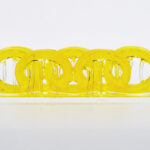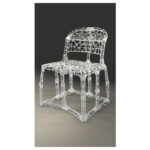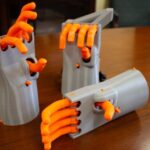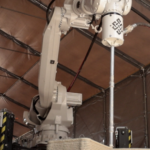Much like its counterparts in the automotive and aviation industries, rail transport is seeing the benefits of 3D printing. Rail companies within the UK are now leveraging additive manufacturing to 3D print various passenger train components such as armrests and grab handles. These companies are also looking into further applications, researching 3D printed seat tables and custom braille lettering for people with disabilities, among other things.
The main issue with trains is that, unlike most cars, they are made in small production runs. Similar to aircraft production, this results in small components being difficult to procure. Replacing armrests, seating tables and other easily breakable components becomes a major hassle, especially for trains that can be over 3 decades old. 3D printing solves this problem by shifting production to an on-demand model with lower production costs.
Currently, the companies have rolled out a few of these 3D printed parts on commercial trains but hope to implement more in the near future. As part of a collaboration between Angel Trains, DB ESG and Stratasys, many railways can replace these obsolete parts all across the UK’s functional passenger trains.
In recent times, we’ve seen growing concern amongst operators that sourcing replacement parts for older train fleets at a reasonable cost and in a short timeframe is proving increasingly difficult James Brown, Data and Performance Engineer, Angel Trains.
Benefits of 3D Printing For Passenger Trains
Passenger trains with 3D printed components have already hit the rails running and are proving to be a success. By 3D printing the grab handles alone, rail companies managed to take costs down significantly from the standard £15,000, while cutting production times from two-and-a-half months to about three weeks. Experts predict that eventually cost savings of 50% per part will be achievable.
As mentioned earlier, part obsolescence is a major concern for rail companies. Chiltern Railways services, running through London and Birmingham, needed a grab handle device for which the original supplier’s business was no longer in operation. Consequently, making more of these parts required a new manufacturing tool, costing up to £15,000 with a production lead time of two and a half months. With 3D printing, the seven grab handles required were produced at a significantly lower cost per part in three weeks.
Traditional manufacturing methods are only cost-effective when producing high volumes of spare parts. In reality, an operator may only need a few obsolete train parts at any give moment, so an on-demand model is more appropriate. Additionally, passenger trains incur a lot more wear and tear due to usage, and sometimes even vandalism. The faster production is far more suitable for these instances.
Rail companies are also putting the technology to good use in terms of customization. Brown states: “we’ve tested 3D printing seat back tables with braille informing the passenger that the toilet is ten rows back from that particular seat. This level of customization is unprecedented and can only be enabled by 3D printing, offering the potential to significantly improve both the servicing of trains and the passenger experience in the future.”
Featured image courtesy of Angel Trains & Stratasys Europe.











